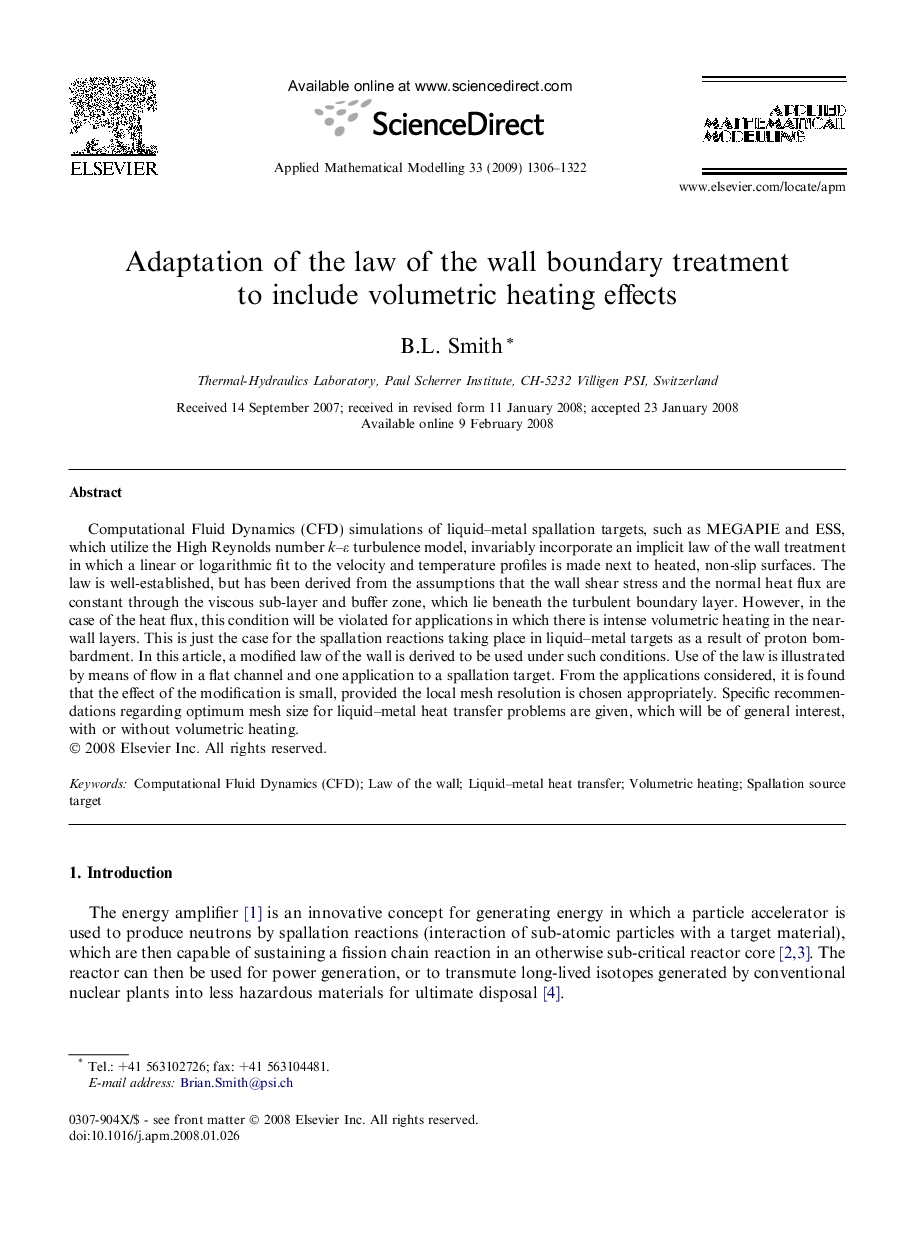| Article ID | Journal | Published Year | Pages | File Type |
|---|---|---|---|---|
| 1707011 | Applied Mathematical Modelling | 2009 | 17 Pages |
Computational Fluid Dynamics (CFD) simulations of liquid–metal spallation targets, such as MEGAPIE and ESS, which utilize the High Reynolds number k–ε turbulence model, invariably incorporate an implicit law of the wall treatment in which a linear or logarithmic fit to the velocity and temperature profiles is made next to heated, non-slip surfaces. The law is well-established, but has been derived from the assumptions that the wall shear stress and the normal heat flux are constant through the viscous sub-layer and buffer zone, which lie beneath the turbulent boundary layer. However, in the case of the heat flux, this condition will be violated for applications in which there is intense volumetric heating in the near-wall layers. This is just the case for the spallation reactions taking place in liquid–metal targets as a result of proton bombardment. In this article, a modified law of the wall is derived to be used under such conditions. Use of the law is illustrated by means of flow in a flat channel and one application to a spallation target. From the applications considered, it is found that the effect of the modification is small, provided the local mesh resolution is chosen appropriately. Specific recommendations regarding optimum mesh size for liquid–metal heat transfer problems are given, which will be of general interest, with or without volumetric heating.
